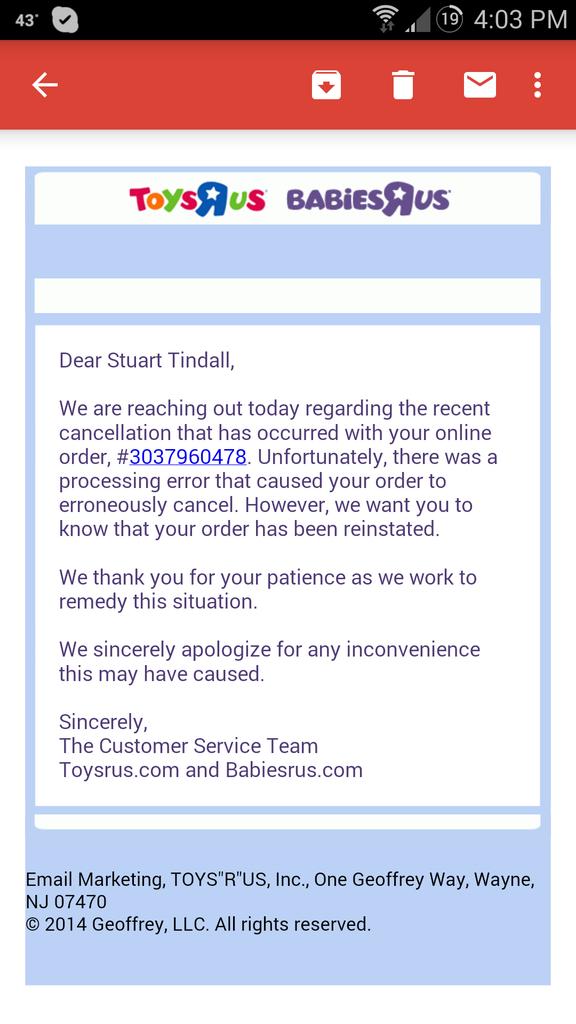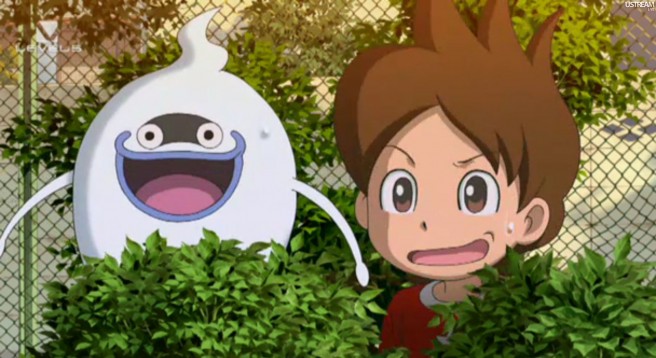Youkai Watch movie sees big debut in Japan
Posted on 11 years ago by Brian(@NE_Brian) in General Nintendo, News | 1 Comment
Youkai Watch’s success doesn’t stop at gaming and television. The series is making a splash in theaters, too.
Youkai Watch’s new movie earned $13.6 million (?1.6 billion) at the Japanese box office over a two day period this past weekend. The next closest film was Big Hero 6, which pulled in $5.4 million (?642 million). Despite being shown on only 408 screens, Youkai Watch doubled up on Disney’s movie (shown at 540 locations).
More: Japan, Level-5, movie, Youkai Watch
Nintendo Minute – Game of the Year: bonus video
Posted on 11 years ago by Brian(@NE_Brian) in General Nintendo, Videos | 0 comments
More: Nintendo Minute
Japanese developers talk about 2015
Posted on 11 years ago by Brian(@NE_Brian) in General Nintendo, News | 11 Comments
In the latest issue of Famitsu, a slew of Japanese developers spoke about their ambitions as we head into 2015. We’ve rounded up some of the responses below. Not all are confirmed to be Nintendo-related, but we’re including the ones that may have some relation to the company.
Tomonobu Itagaki (Valhalla Game Studios) – Itagaki alludes to 2015 being the year he sets off a big, brand new bomb, which is surely alluding to Devil’s Third.
Hiroyuki Kobayashi (Capcom) – In 2015, he has a number of titles both to be announced and to be released.
Tsuji Bonbon (Capcom) – The 11th year of the Monster Hunter series will be a new start.
Ichiro Hazama (Square Enix) – Working really hard on another game that’s proving arduous to make.
Kotaro Uchikoshi (Spike Chunsoft) – Has lots of things brewing that will be exploding onto the scene. Will be continuing along on some things and will have stuff to announce down the line.
Yuichiro Saito (Spike Chunsoft) – Has a few unannounced titles.
Makoto Osaki (Sega) – “We have unannounced titles in development.”
Masaaki Hoshino (Bandai Namco) – More information on Pokken is coming soon.
Hideki Kamiya (Platinum Games) – The Takarazuka opera should be hot in 2015.”(2015???????????)
Yusuke Hashimoto (Platinum Games) – New projects are underway.
Kenichiro Takaki (Marvelous) – Might have several non-Kaura original new game announcements.
Akihiro Hino (Level-5) – There are plans to start a new big project.
Jiro Ishii – I’ll be able to announce a number of titles in 2015.
Cancelled Toys “R” Us amiibo pre-orders involving PayPal or gift cards not automatically reinstated, but can be reordered
Posted on 11 years ago by Brian(@NE_Brian) in General Nintendo, News | 0 comments
Toys “R” Us started sending out emails yesterday about amiibo pre-orders that were accidentally cancelled due to an internal error. You likely received one of two messages. The first one states that your order (or orders) was automatically reinstated. We’re also now aware of a second that informs consumers that their pre-order couldn’t be reinstated, but the items can be re-ordered.
So what’s the difference? Toys “R” Us has explained that those who paid with PayPal or gift cards couldn’t have their orders return automatically. Still, the retailer will soon send out instructions about how they can reorder their item.
The difference is in fact due to the form of payment. If paid through PayPal or gift card it is not possible to automatically reinstate an order. However, as mentioned, all customers will receive communication with instructions on if they need to and how to reorder their item.
Toys “R” Us reinstating some cancelled amiibo pre-orders
Posted on 11 years ago by Brian(@NE_Brian) in General Nintendo, News | 4 Comments
Late last week, Toys “R” Us cancelled a slew of amiibo pre-orders. We later learned that the issues came about due to an error within the retailer’s system, and the company was working on bringing back reservations.
Emails going out today confirm that Toys “R” Us is working on reinstating pre-orders. Keep track of future updates from the retailer. Here’s hoping any figures pre-ordered that were wrongly cancelled will be successfully restored.
Nintendo of America jokes about a Reggie amiibo
Posted on 11 years ago by Brian(@NE_Brian) in General Nintendo, News, Random | 17 Comments
A Reggie Fils-Aime amiibo won’t be coming out anytime soon, but that doesn’t mean Nintendo can’t make a joke about it! The company’s American subsidiary did just that with a new post on Facebook yesterday. View it below:
More: Amiibo, Reggie Fils-Aime
BBC iPlayer for Wii U targeting launch “early next year”
Posted on 11 years ago by Brian(@NE_Brian) in General Nintendo, News | 2 Comments
The BBC iPlayer still has yet to hit Wii U, though it’s still planned for release. Senior product manager Peter Lasko recently noted on the BBC blog, “We hope to bring iPlayer to Wii U early next year.” A specific date wasn’t shared.
PDP releases amiibo Carry Cube
Posted on 11 years ago by Brian(@NE_Brian) in General Nintendo, News | 7 Comments
PDP has offered another alternative for amiibo storage. A few days ago, the company released the Nintendo-licensed “amiibo Carry Cube” for $9.99. It’s temporarily out of stock on Amazon, though you can still place an order.
Youkai Watch anime confirmed for overseas territories, big new Level-5 franchise teased
Posted on 11 years ago by Brian(@NE_Brian) in General Nintendo, News | 6 Comments
The Youkai Watch anime is heading overseas, Level-5 president Akihiro Hino confirmed to Wedge Infinity. Some character names will be changed, but popular names like Whisper and Jibanyan will be kept in tact. The anime will air in the United States, Europe, and other regions.
Also while speaking with Wedge Infinity, Hino teased a new franchise coming next year that will be even bigger than Youkai Watch:
“It takes a lot of time to craft new installments of Yokai Watch, but on some weeks, we’re actually spending more time on our ‘new title.’ Around this time next year, I think we’ll have something out that’s different not just from Yokai Watch, but anything else we’ve ever done before. 2015 is going to be yet another big year of change for us. 2015 will be a year where we usher in a hit bigger than Yokai Watch.”
With Level-5’s unannounced franchise, Hino wants it to resemble the things he enjoyed as a kid, but more modernized. It will consist of games, anime, and manga.
Last but not least, Hino mentioned that Level-5 will not be moved to Tokyo since he wants to foster its current location of Fukuoka to be the ‘Hollywood’ of games.







